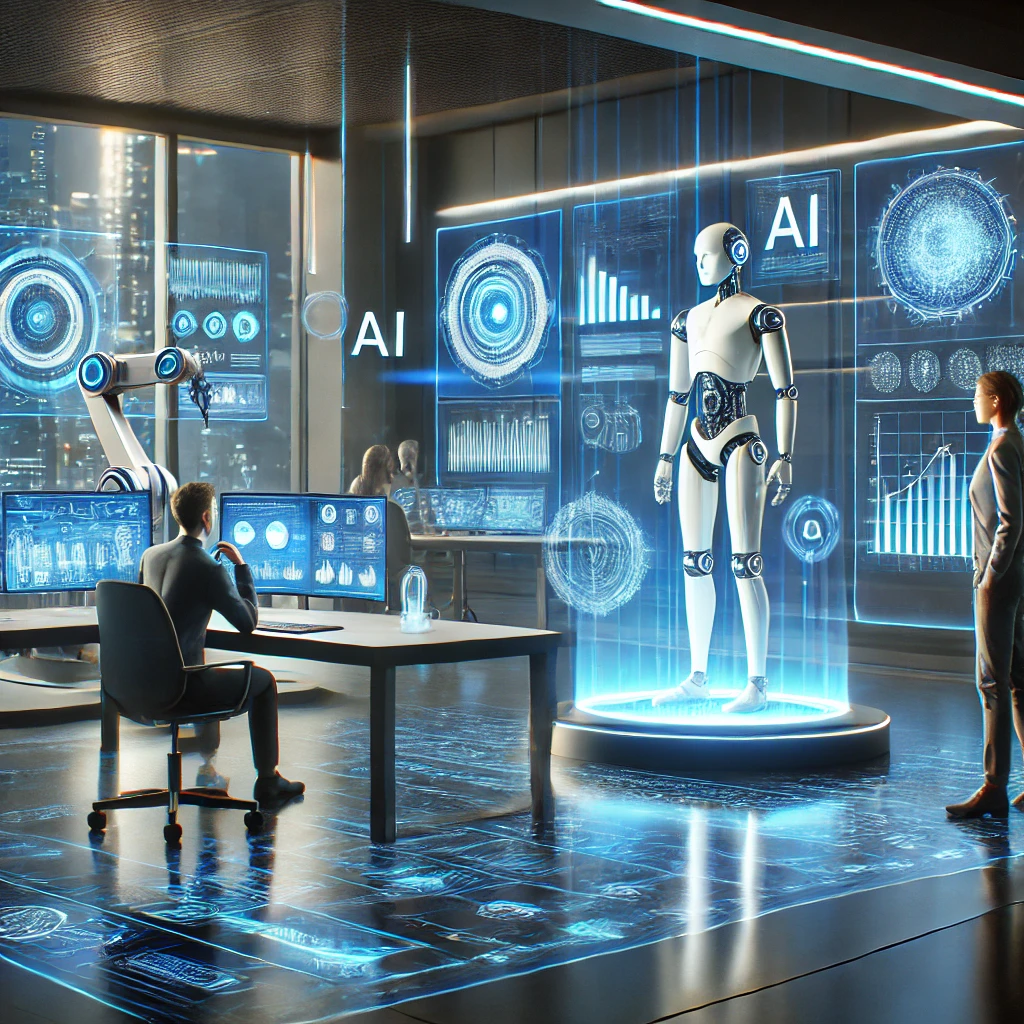
Introduction
Artificial Intelligence (AI) is no longer a futuristic concept—it is already transforming industries, businesses, and everyday life. From automation that streamlines workflows to augmentation that enhances human capabilities, AI is reshaping the way we work, interact, and innovate. In this blog, we explore how AI is driving both automation and augmentation, revolutionizing industries, and what the future holds for this powerful technology.
Understanding AI: Automation vs. Augmentation
AI is broadly used in two key ways:
- Automation – AI-driven systems take over repetitive tasks, improving efficiency and reducing human intervention.
- Augmentation – AI enhances human intelligence by providing better insights, recommendations, and decision-making support.
AI in Automation: Streamlining Processes
1. AI in Business Operations
Businesses use AI-driven automation for customer service chatbots, automated invoicing, HR management, and fraud detection. This not only improves efficiency but also reduces operational costs.
2. Manufacturing and Robotics
AI-powered robots are transforming industries by handling complex tasks such as precision assembly, quality control, and predictive maintenance. This results in reduced downtime and higher productivity.
3. AI in Healthcare
From automating administrative processes to analyzing medical images, AI is making healthcare more efficient. AI-powered chatbots assist in preliminary diagnosis, while robotic process automation (RPA) streamlines patient records management.
AI in Augmentation: Enhancing Human Capabilities
1. AI in Creativity and Content Generation
AI is augmenting human creativity with tools like AI-generated art, automated content writing, and music composition. Companies leverage AI to create personalized marketing campaigns and enhance customer engagement.
2. AI in Decision-Making
AI-driven analytics provide real-time data insights, predictive modeling, and business intelligence. This helps leaders make informed decisions, optimizing operations and improving customer experience.
3. AI in Education and Learning
AI-powered platforms offer personalized learning experiences, intelligent tutoring systems, and automated grading, making education more adaptive and efficient for students and teachers alike.
Future of AI: What’s Next?
As AI continues to evolve, we can expect:
- More advanced natural language processing (NLP) for human-like interactions.
- AI-driven personalized experiences in healthcare, entertainment, and education.
- Hyper-automation, where AI integrates with IoT and blockchain for even smarter automation.
- Ethical AI development focusing on transparency, fairness, and responsible AI use.
Challenges and Considerations
Despite AI’s advancements, challenges remain:
- Bias in AI models – Ensuring AI systems make fair and unbiased decisions.
- Data privacy concerns – Addressing security risks associated with AI-driven data collection.
- Workforce transformation – Upskilling employees to work alongside AI rather than being replaced by it.
Conclusion
AI is driving a new era of efficiency and intelligence through both automation and augmentation. As businesses and individuals adapt to these AI-powered advancements, the key is to leverage AI responsibly to maximize its benefits. The future belongs to those who embrace AI’s potential while addressing its challenges.